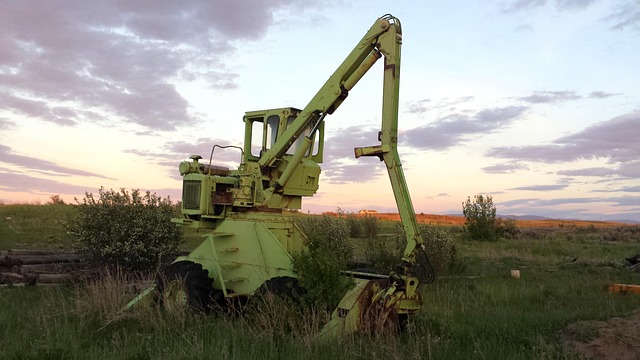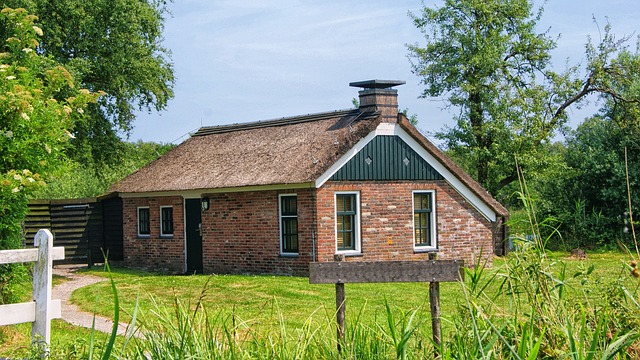In the late 19th century, Cottage Grove transformed from an isolated farming community to a regional transportation hub due to the arrival and expansion of the railroad, which facilitated local agricultural and timber exports. This mobility boost spurred commerce and industry, setting the stage for future prosperity. During the Great Depression, residents faced severe challenges but showed remarkable resilience through community support, adaptive farming practices, and innovative business strategies. Today, Cottage Grove's history offers valuable insights into navigating economic downturns and remains a testament to the power of resourcefulness, unity, and proactive approaches.
Cottage Grove, a small community deeply rooted in American history, experienced significant shifts during the Great Depression. The town’s economic landscape was previously fueled by extensive railroad expansion, which brought both prosperity and vulnerability. As the country grappled with economic turmoil, Cottage Grove’s story becomes a microcosm of resilience and adaptation. This article explores how the community navigated the challenges, delving into the impact of railroad expansion, daily life in the depression era, and the lasting lessons learned from this pivotal period.
- The Impact of Railroad Expansion on Cottage Grove's Economy
- Life in Cottage Grove During the Great Depression: Challenges and Resilience
- Historical Lessons from Cottage Grove: Adapting to Economic Hardship
The Impact of Railroad Expansion on Cottage Grove's Economy

The arrival and subsequent expansion of the railroad in Cottage Grove during the late 19th century marked a pivotal moment for the town’s economic growth. This transportation revolution brought significant changes, transforming Cottage Grove from an isolated farming community into a bustling hub. The railroad enabled easier access to markets, facilitating the export of local agricultural produce and timber, which were once cumbersome to transport over land. As a result, businesses flourished, attracting new residents and investors who recognized the town’s potential as a regional transportation center.
Cottage Grove’s strategic location along major rail lines positioned it advantageously for both passenger travel and freight transportation. The increased mobility of goods and people fostered an environment conducive to commerce. Local industries, such as lumber mills and agricultural processing facilities, boomed, creating jobs and stimulating the local economy. This period of railroad expansion set the stage for Cottage Grove’s future prosperity, shaping its identity as a dynamic community resilient enough to weather economic challenges, including the Great Depression that followed.
Life in Cottage Grove During the Great Depression: Challenges and Resilience

Life in Cottage Grove during the Great Depression was marked by significant challenges, but also remarkable resilience among its residents. As a small agricultural community heavily reliant on local farms and the nearby Cottage Grove railroad expansion, economic hardship hit hard when markets collapsed and unemployment surged. Many families faced food shortages and struggled to make ends meet. Despite these hardships, the tight-knit community spirit shone through. Local churches, schools, and neighborhood groups organized efforts to support those in need, providing a safety net for many.
Resilience was fostered through community initiatives like farmers’ cooperatives, which helped negotiate better prices for local produce. The railroad expansion, though initially a source of economic hope, shifted as the depression deepened, leading to reduced freight traffic. Yet, residents adapted by finding new ways to support themselves and each other. This period left an indelible mark on Cottage Grove, shaping its character and the bonds between its people, demonstrating a collective strength that would continue to define the community in years to come.
Historical Lessons from Cottage Grove: Adapting to Economic Hardship

During the Great Depression, Cottage Grove, like many small towns across America, faced immense economic challenges. The community’s history with railroad expansion had left it relatively prosperous compared to other areas, but the sudden collapse of the economy still hit hard. Locals had to adapt and find creative solutions to survive. Farmers adopted sustainable practices to make the most of limited resources, while businesses implemented innovative strategies to keep their doors open. This period taught valuable lessons about resilience and community support.
The experiences of Cottage Grove offer important historical insights that remain relevant today. As a society, we’ve seen similar economic downturns and continue to face unpredictable market fluctuations. The adaptations made by this small town demonstrate the power of resourcefulness, unity, and a proactive approach in navigating difficult times. By learning from the past, we can better prepare for future challenges.






